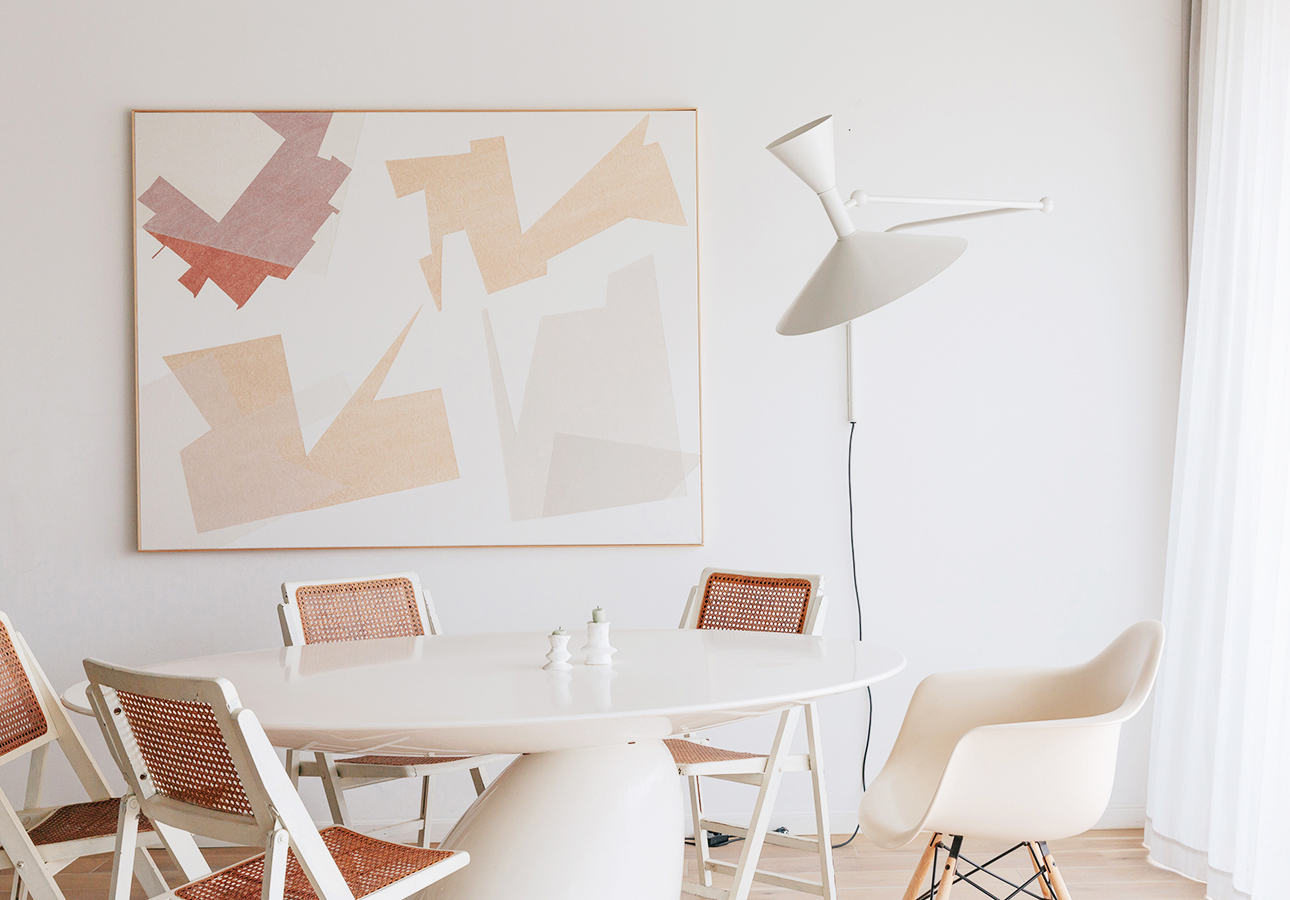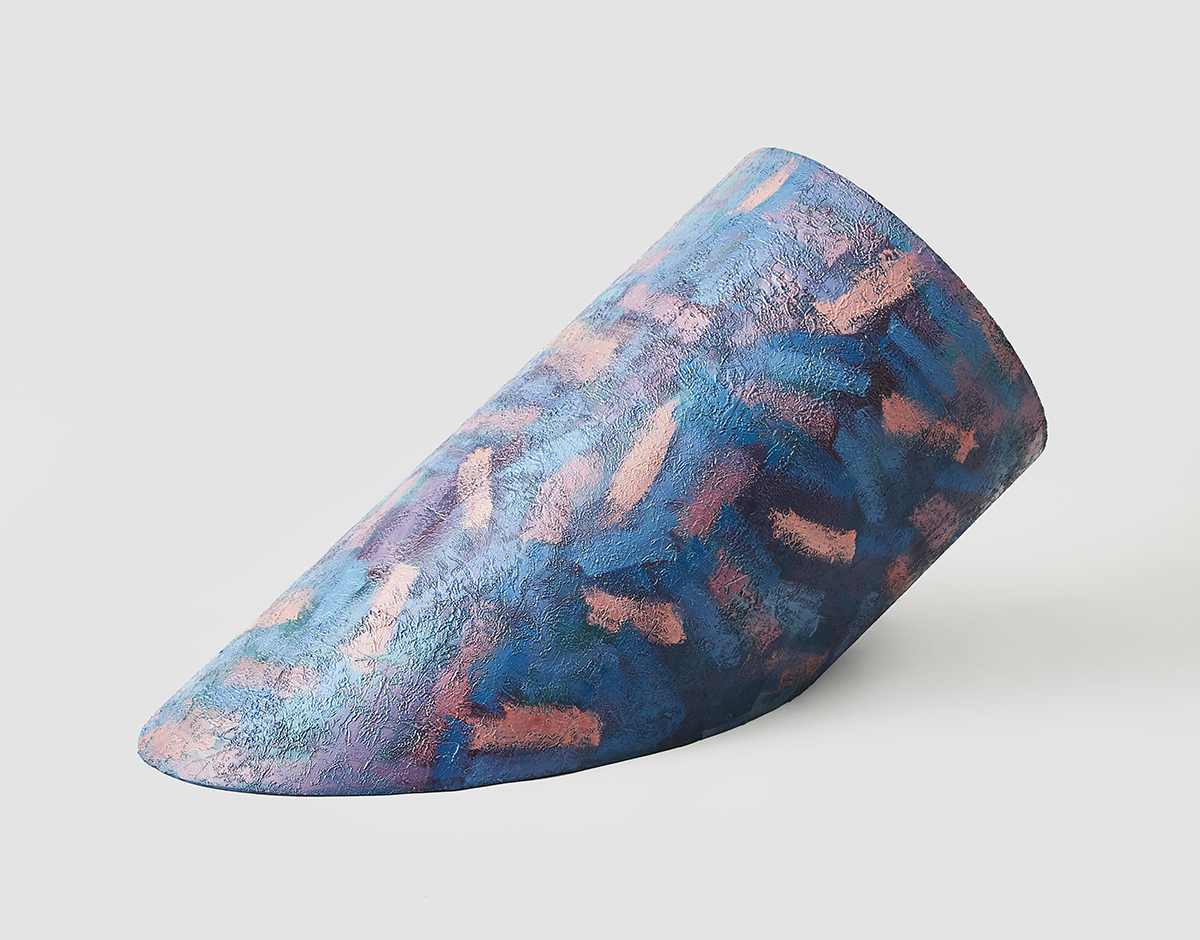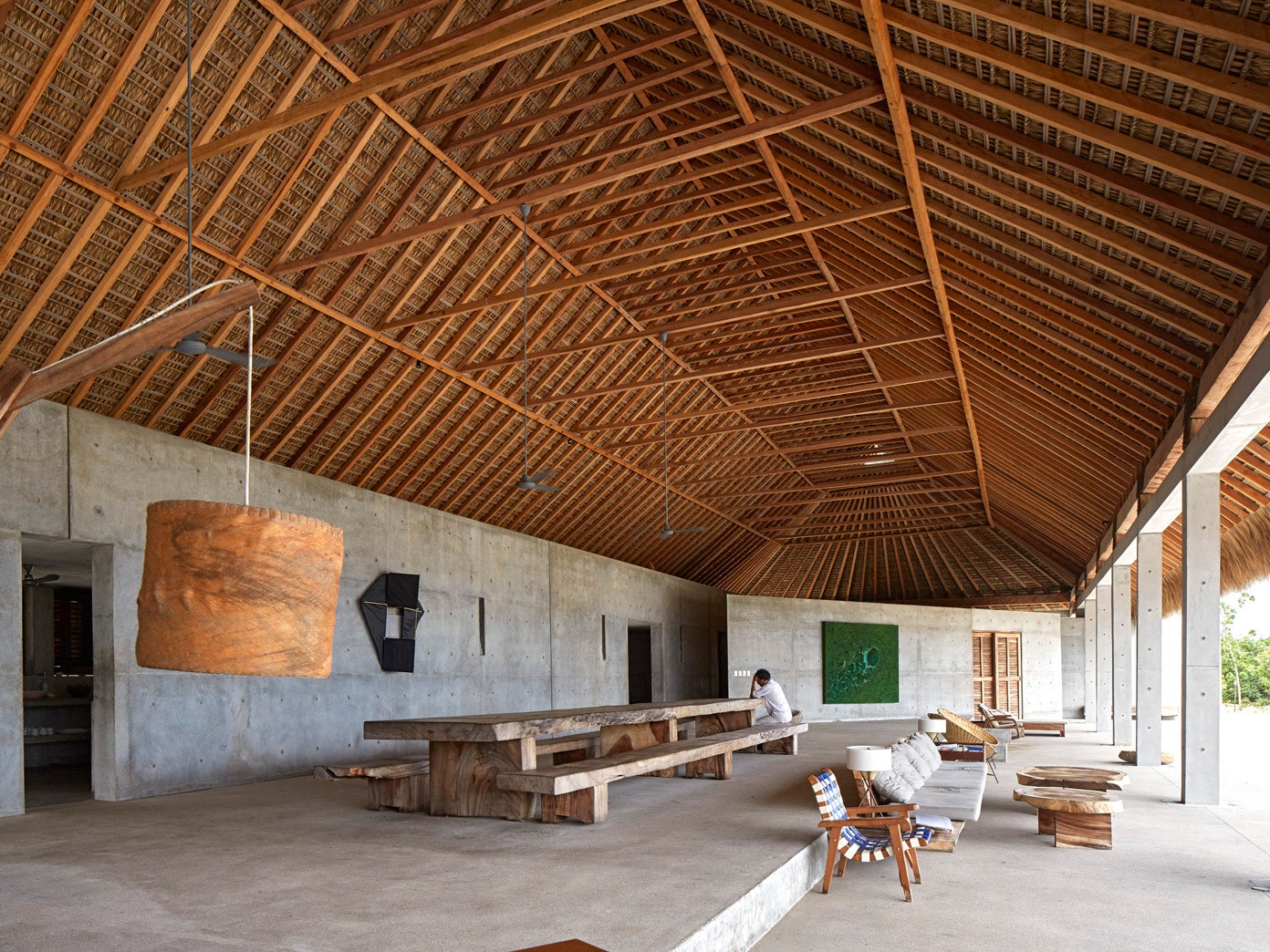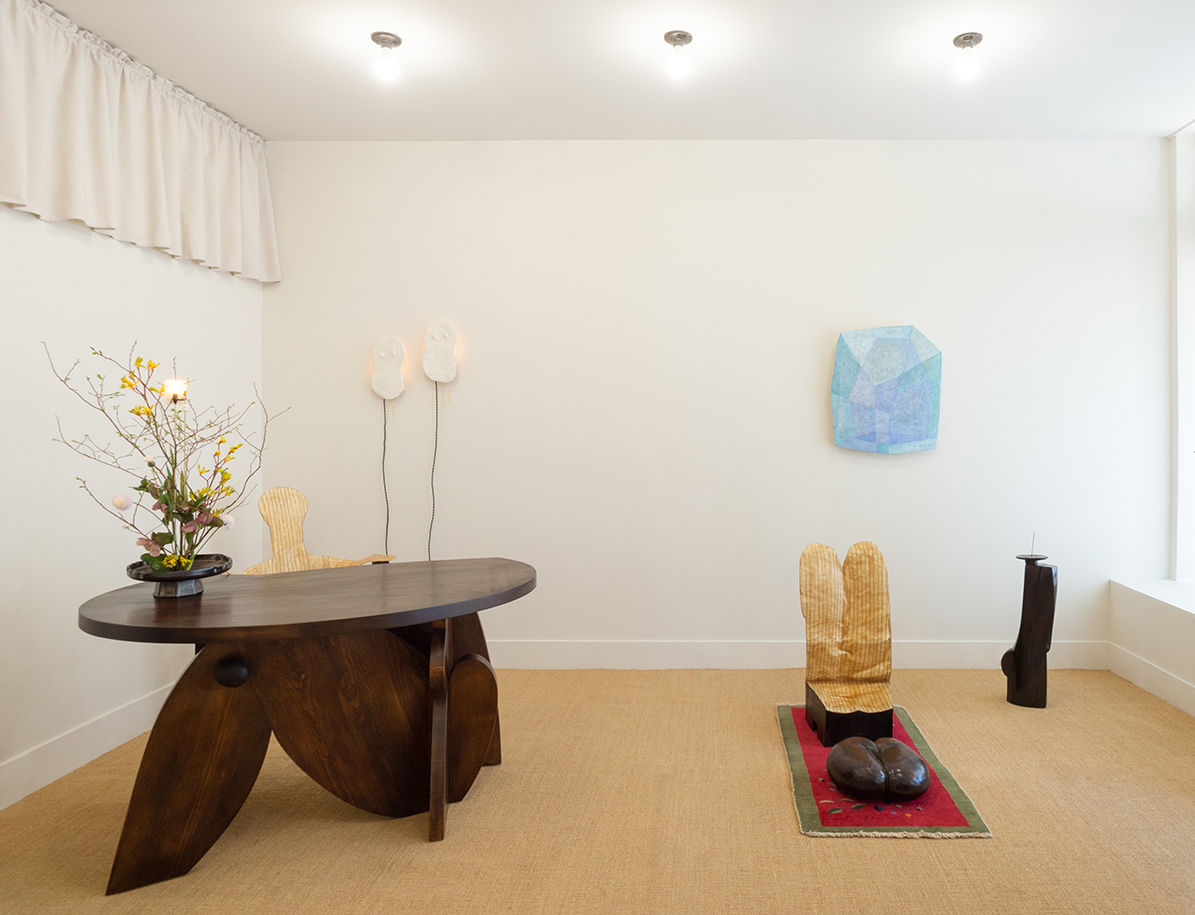
07.21.21
Q+A
In His Debut Exhibition, Minjae Kim Explores Identity and Getting Lost in Cultural Translation
It’s widely understood by now that so much of what we consider pillars of the canon of Western art and design can be boiled down to borrowing from other cultures. We know that Picasso’s long, flat, painted faces were inspired by traditional African masks and that floral chinoiserie prints were made by European decorators wanting to mimic the patterns found on Chinese ceramics. In an essay that accompanies architect and designer Minjae Kim’s debut exhibition at the Los Angeles gallery Marta — curated by Marta co-founders Benjamin Critton and Heidi Korsavong —writer Su Wu delves into the tensions, inspired by this appropriation, that makes up the core of Kim’s work. “By allowing rituals of life and their affiliated embellishments to be misconstrued,” she writes, “Minjae’s furniture turns the Western decorative canon into a romantic imagination — inverting the Modernist appropriation of non-Western aesthetics.”
The objects Kim has created for the exhibition are a take on his own preconceptions about Western or Euro-centric culture, which — now having lived in the US for most of his adult life after growing up in Korea — he describes as akin to “being in two places at once.” A lacquered beechwood desk alludes to the forms of Matisse’s cut-out compositions, while an anthropomorphic fiberglass seat references Freud’s own office chair (originally designed by Viennese architect Felix Augenfeld), with a complimentary chaise, of course. A prayer chair designed to be knelt on like the ones you would find in a Catholic church — made of the same seemingly fragile materials as the chaise — translates the anachronistic typology in a totally new light. “How might someone not from here make a beautiful absurdity of writing desks, praying chairs, and chaise lounges — of letter writing, kneeling to pray, or fainting,” Wu continues in her text, “just as Picasso or Breton appropriated histories and forms they did not fully understand?”
We spoke to Kim about his pivot to design from architecture, his process of material experimentation and how willfully misconstruing the Western canon can become a statement on identity.
Photos by Erik Benjamins; portrait by Clement Pascal
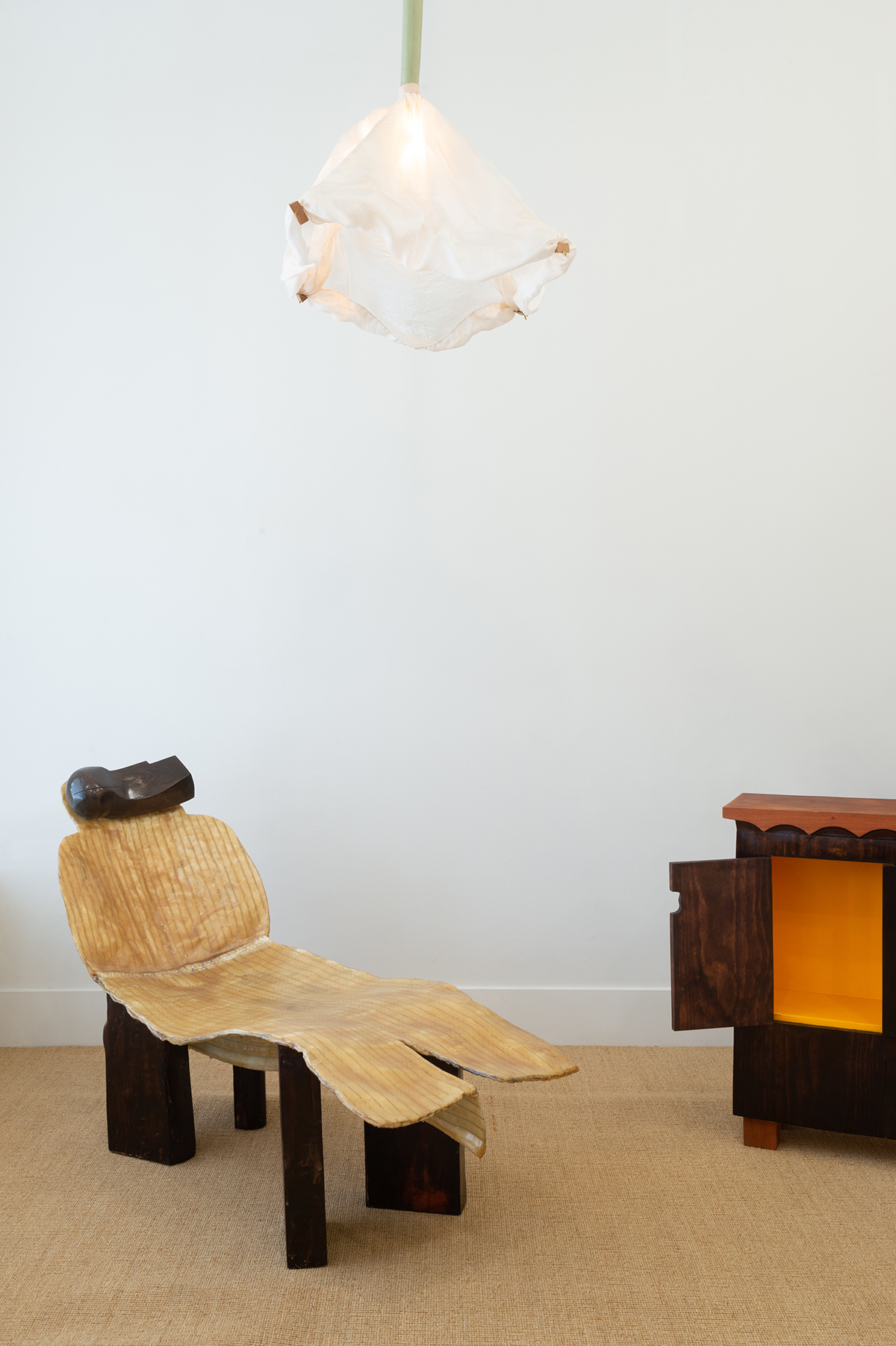
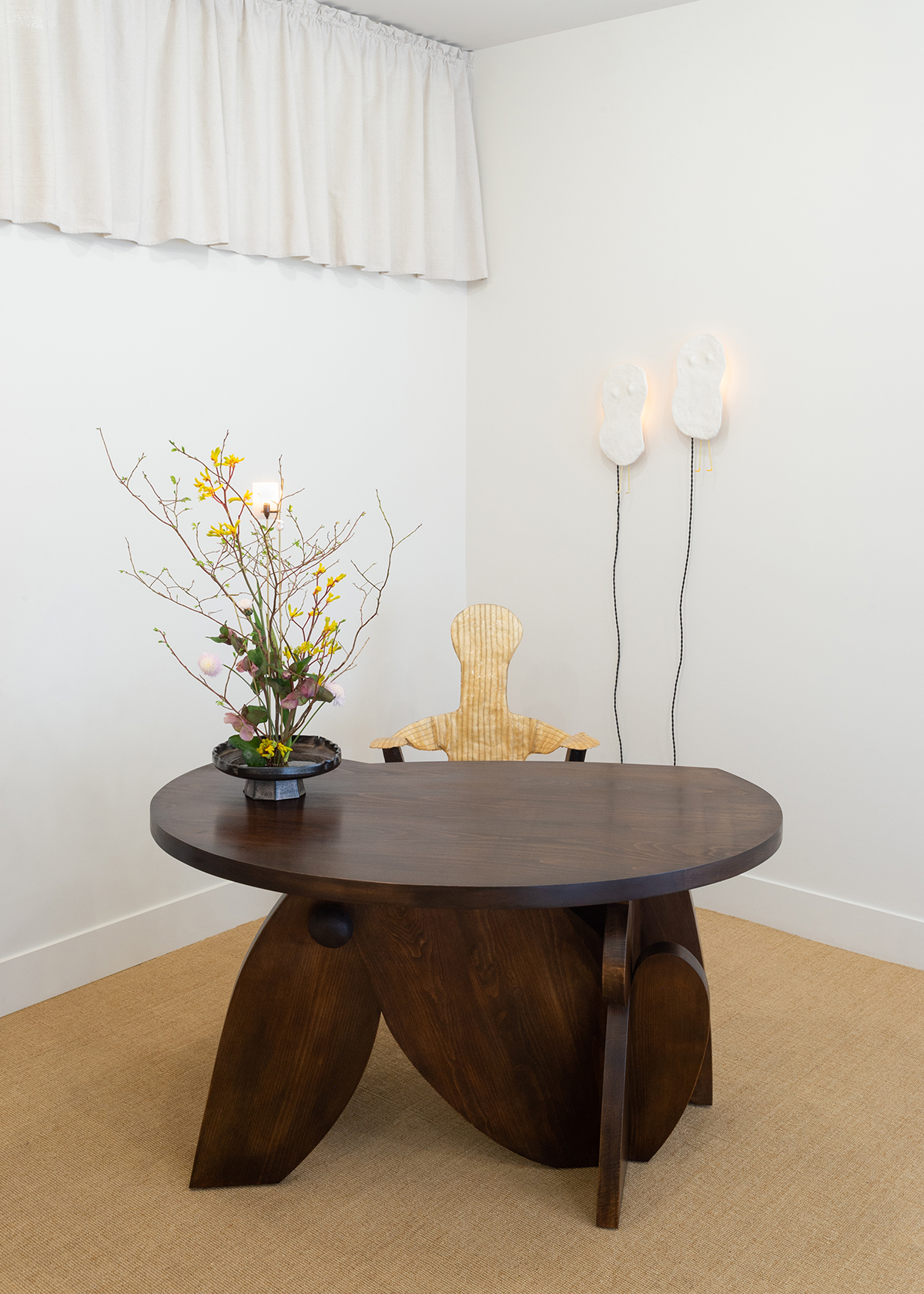
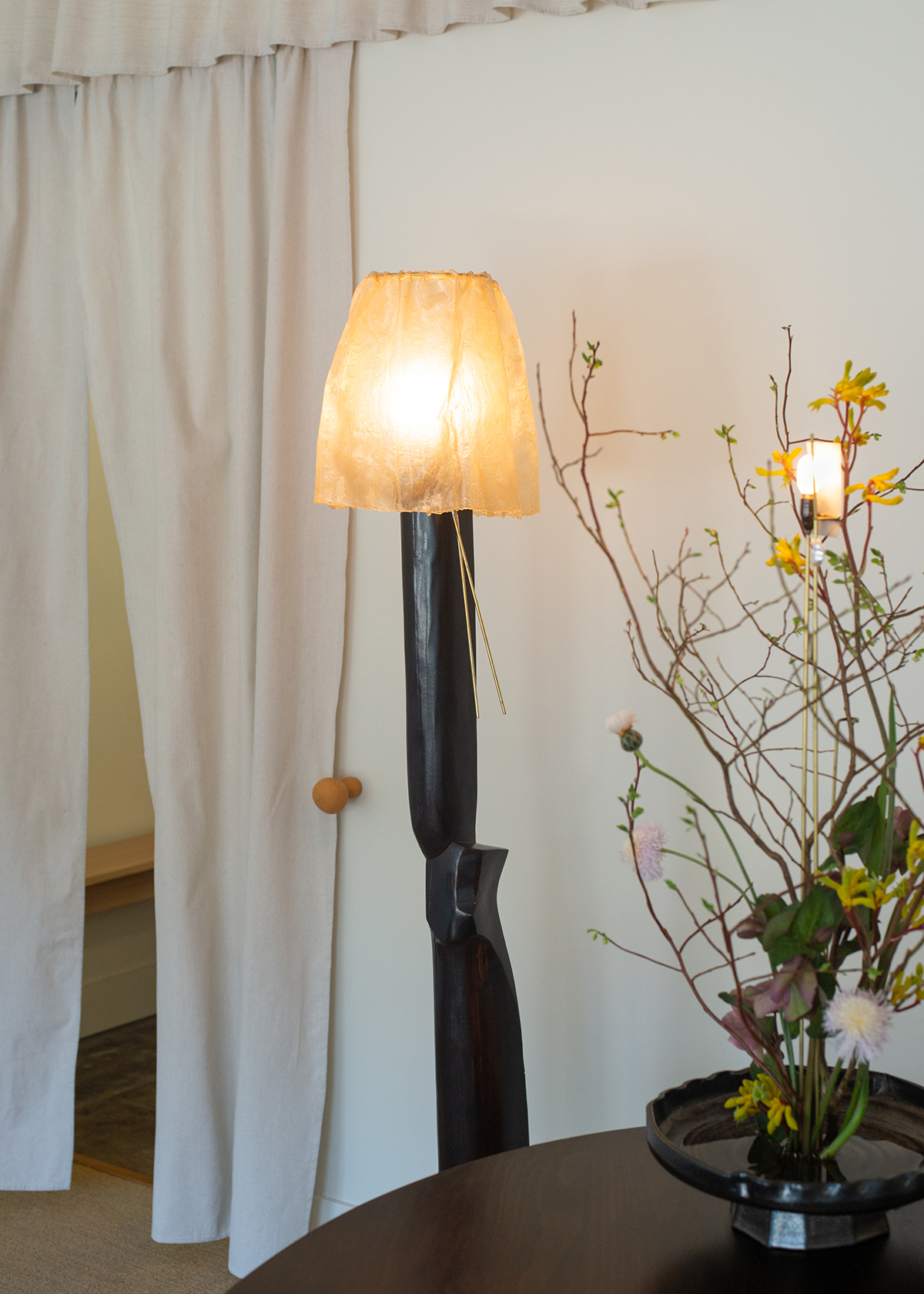
Tell us a little bit about your creative background. Where are you from? What did you study?
I grew up in South Korea then came to the US after high school. I spent the first half of my twenties in Seattle, and then I was back in Seoul for a few years for my military service. I returned to New York to do my Master’s in Architecture at Columbia and I’ve been there since then. Everything has been in two to three-year cycles with lots of moving around. After grad school, I spent three years working in the studio of Giancarlo Valle, and now I’m just starting my own practice.
What was the experience of working with Giancarlo like?
We had a pretty intimate studio. It was interesting being able to grow with a practice and do so much in terms of scale. There was a ground-up project and a townhouse remodel, but sometimes we were just working on furniture details, looking at, like, custom cast knobs. I think the best part of working with him was being able to move across all these scales, which helped me broaden my initial ideas about practicing architecture. Working with him was a nice way to grind it down to the actual experience of being in space and interacting with materials.
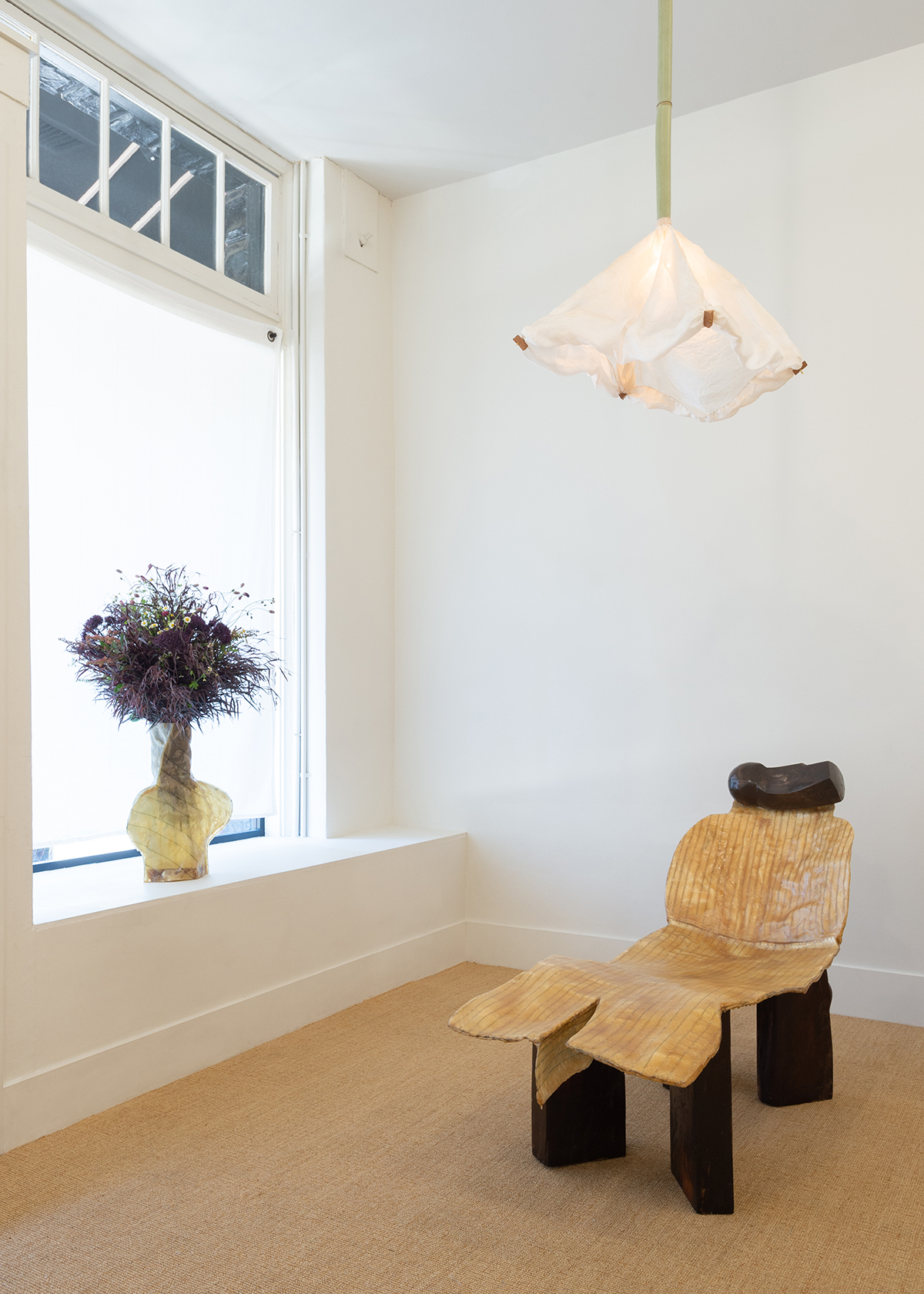
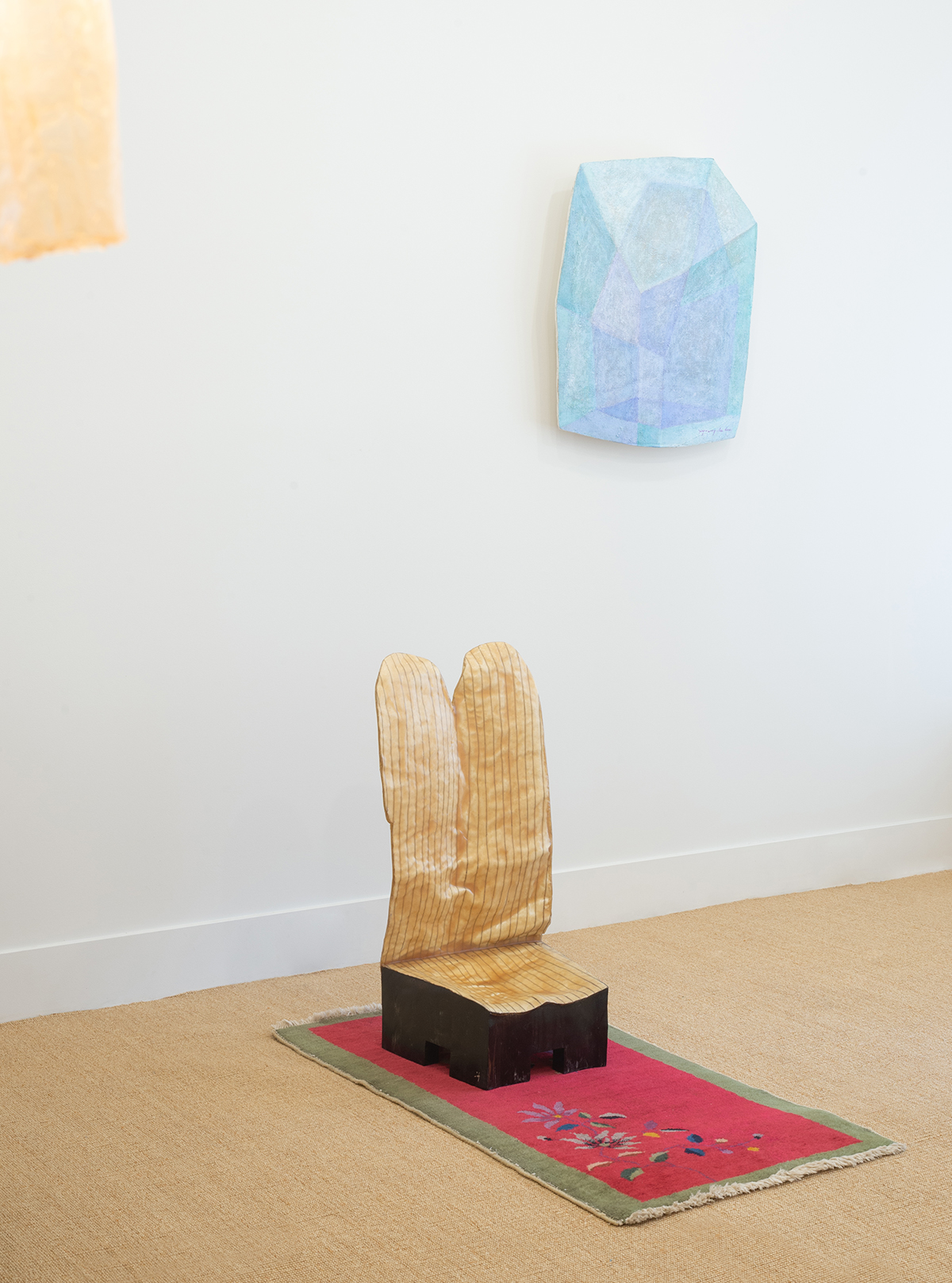
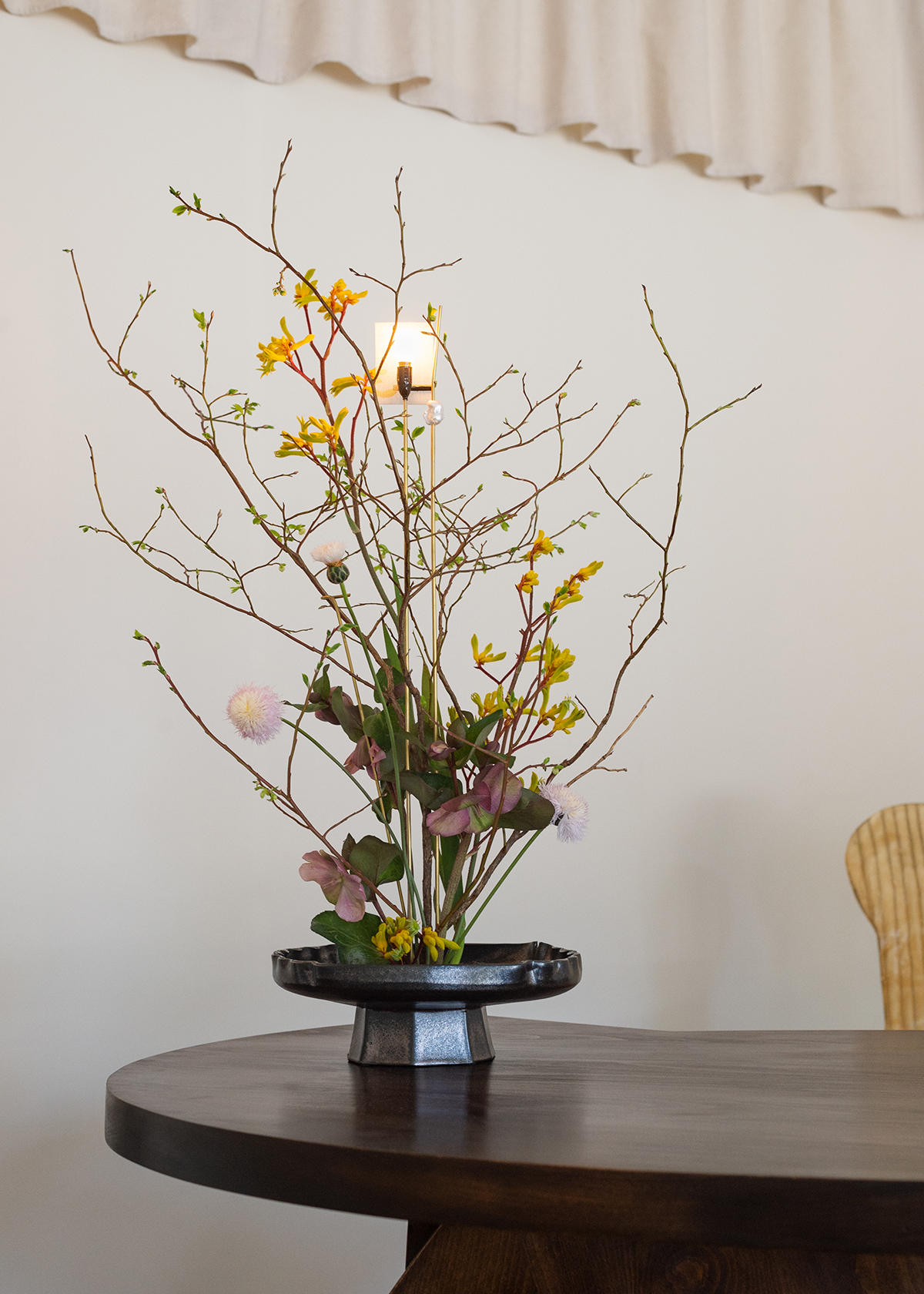
What was the initial impetus for starting your own practice?
As a creative person, you always have these kinds of side projects, right? And I think while I was in architecture school or working, I always tried to have a place that I could do that type of stuff, especially since learning how to work in a shop in undergrad. So I kept doing that over the years, — it’d be a chair or a little lamp. And then when COVID came, it gave me the opportunity to do more, just because my day job hours were temporarily reduced. Because of that, I was able to build a body of work and I was able to share it, which led to some interest from friends or strangers on social media wanting to buy the pieces and that gave me enough fuel to keep going even after we were back to 100% hours.
Let’s talk about some of the broader concepts in the show. Can you explain where the name came from, “I Was Evening All Afternoon”?
I was working with Su Wu and talking about the upcoming show. She mostly came up with the title after a conversation we had. I was pretty sure that I wanted to make these specific typologies because they were such a mystery or wonder to me, or sometimes funny, like a prayer chair. It is a really interesting typology of chairs that I wasn’t familiar with — a chair that you kneel on. So when I was starting to develop these typologies, I realized that I had a huge lack of understanding of these pieces. So Su and I were just talking about the irony of deciding to make these pieces but never having really used them myself or been around them. So there’s this kind of irony of relationship, I guess, between the and these pieces are these typologies.
We began to expand on the idea of identity as well. Not being from Western culture, and then trying to build things that are very desired in Western culture. So we talked about that being this weird, out-of-body experience: of being in two different places at once. Then she tied it to the poem [“Thirteen Ways of Looking at a Blackbird” by Wallace Stevens]. In the text, there is a phrase that says ‘it was evening all afternoon’. And I think that really resonated with her so she shared it with me. We eventually changed the ‘It’ to ‘I’ to make it more personal about my approach and identity.
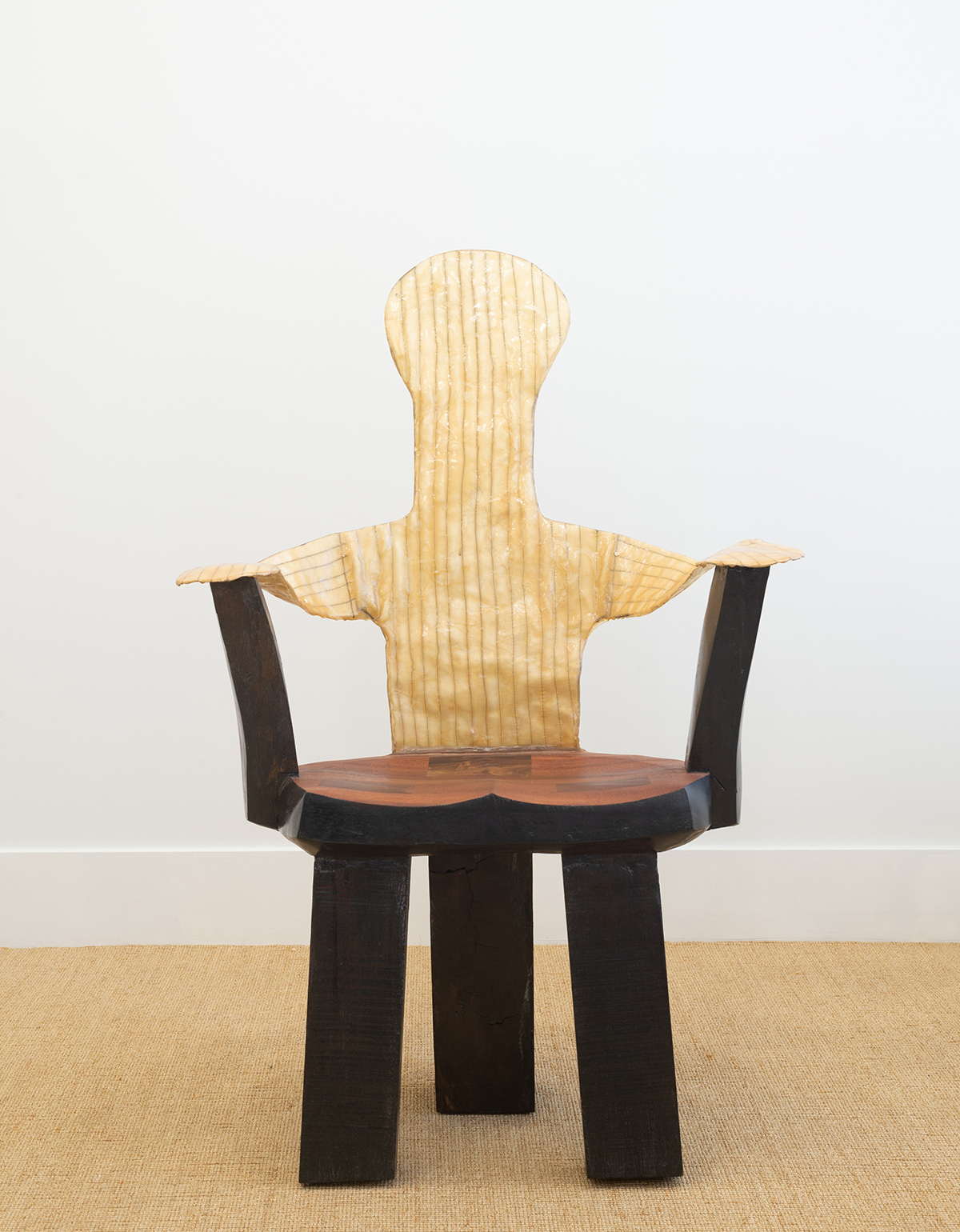
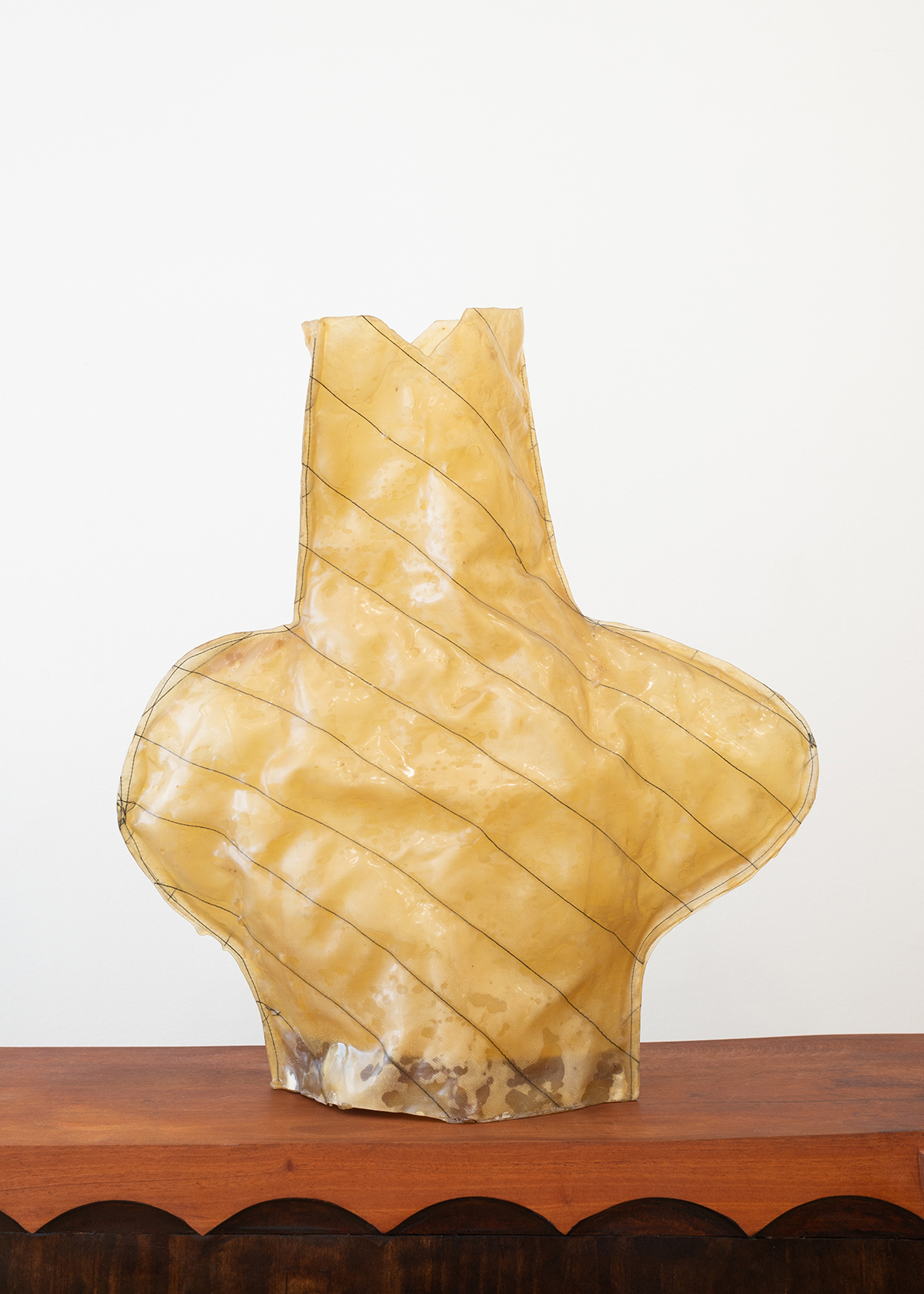
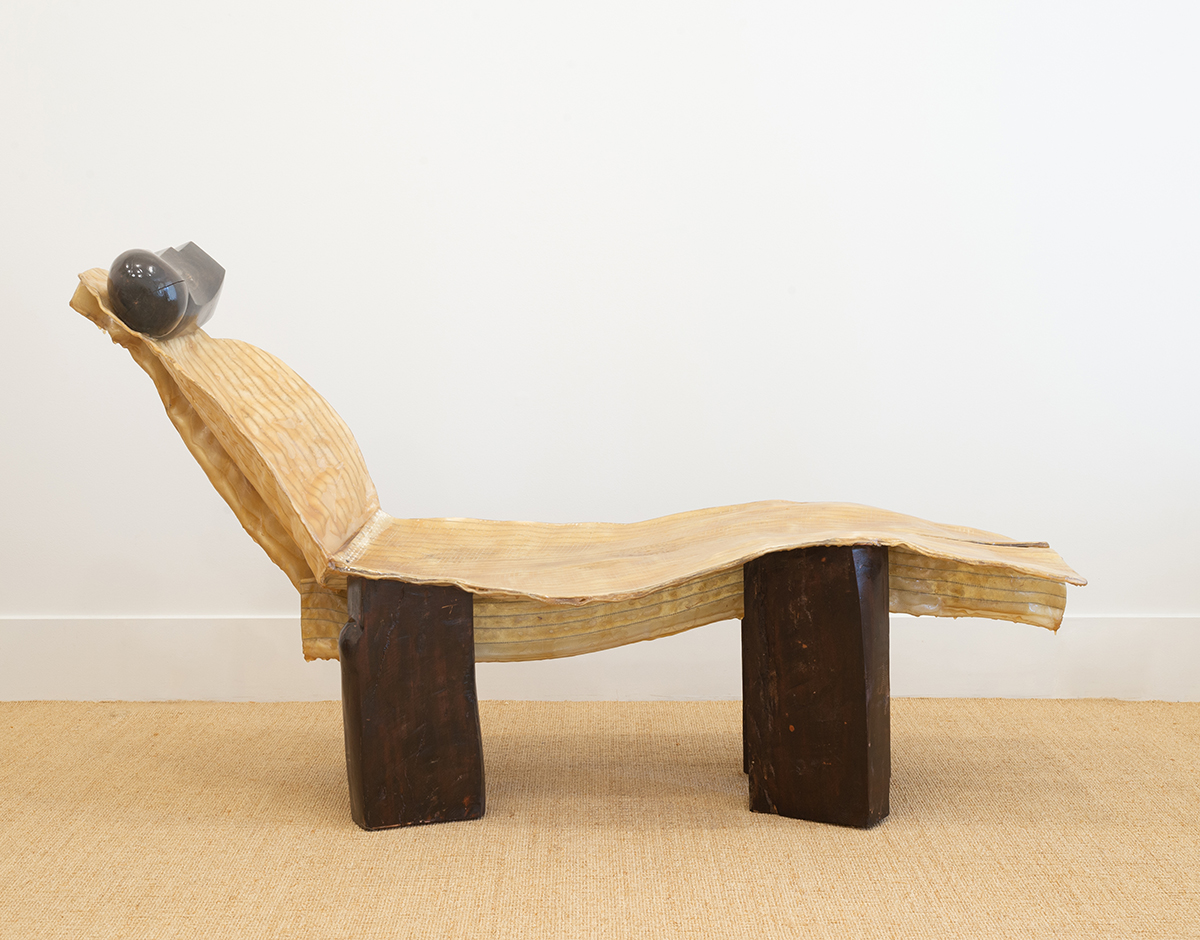
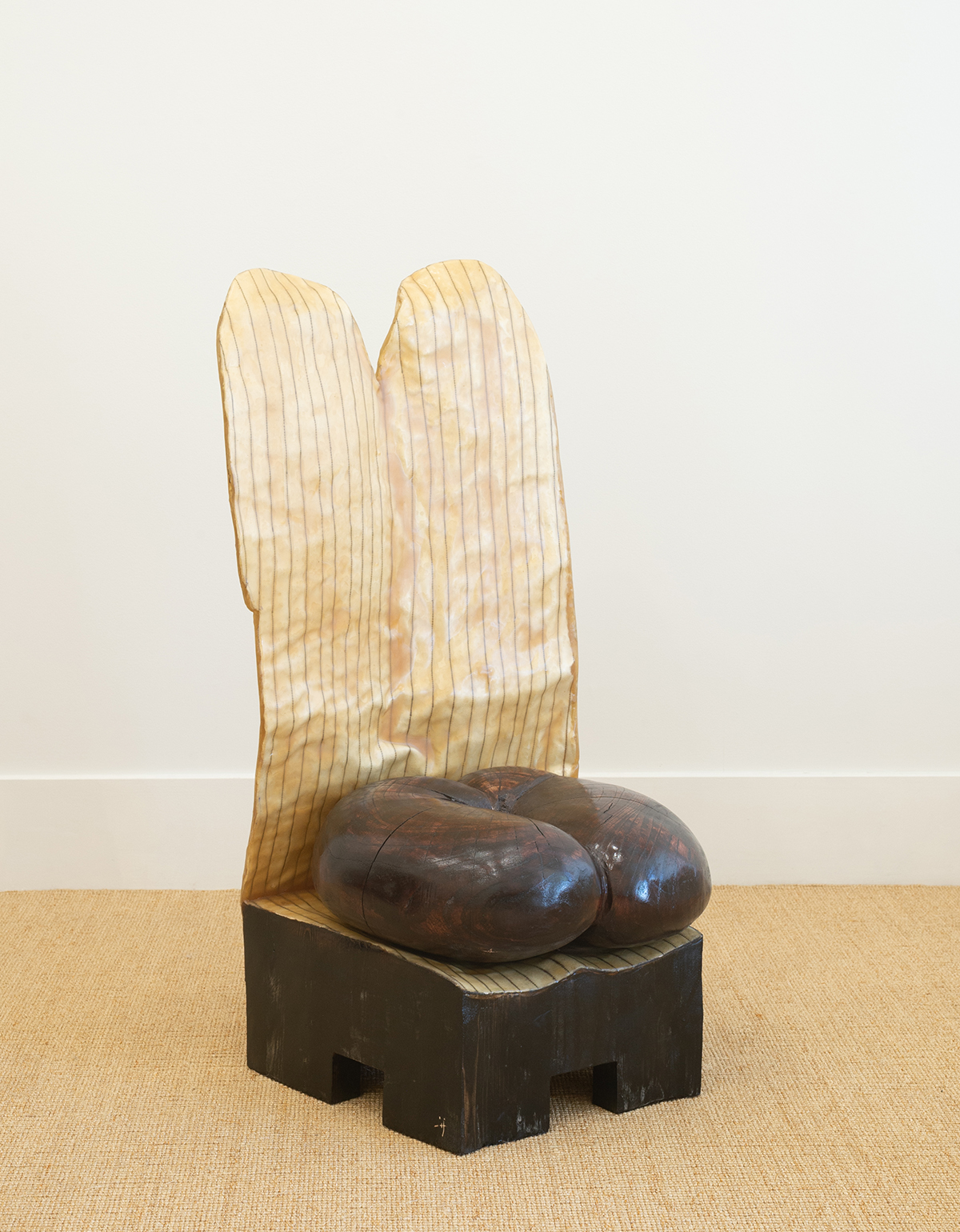
I’m interested in the material experimentations you’ve worked on in this collection, especially the fiberglass. Can you tell me a little bit about that process?
The technique I’ve been using is quilted fiberglass. Usually, this type of fiberglass comes in a roll or folded sheets — it’s like buying fabric. When I was in architecture school, I tried a conventional method of layering sheets with brushed-on resin in between and I just found it really tedious. So I tried to find an alternative way to work with it and one of the thoughts I had was to just build multiple layers prior to applying resin, giving it a little bit more thickness and material presence and structure before hardening them with the resin. That became a really interesting process to explore because it allowed me to save a lot of time and effort. I also didn’t have to use a mold anymore — usually, fiberglass is based off formwork — but the process of using these stitches gave it a very specific look that I’ve been enjoying. The graphic aspect is pretty interesting.
As for the lacquer part, I think that’s definitely the part where people thought it was more of a traditional exploration, which is an aspect of it because the tone of the stain I use to make the color and some of the texture definitely comes from the fact that I’m drawn to Korean or Japanese antiques. The finish is so specific that it allows me to transform the material pretty dramatically without painting it and still responding to the wood itself, for example, the volume and its wood finish.
What about the functionality. Are they strong enough to use? They look so delicate.
I get this question a lot. They’re very functional, I’d say in terms of strength. Fiberglass is an industrial scale material, it’s used to patch up cars. But yeah, they look really fragile. Depending on the piece, it’ll have 20 to 30 layers of fiberglass, with resin, and it can get pretty strong.
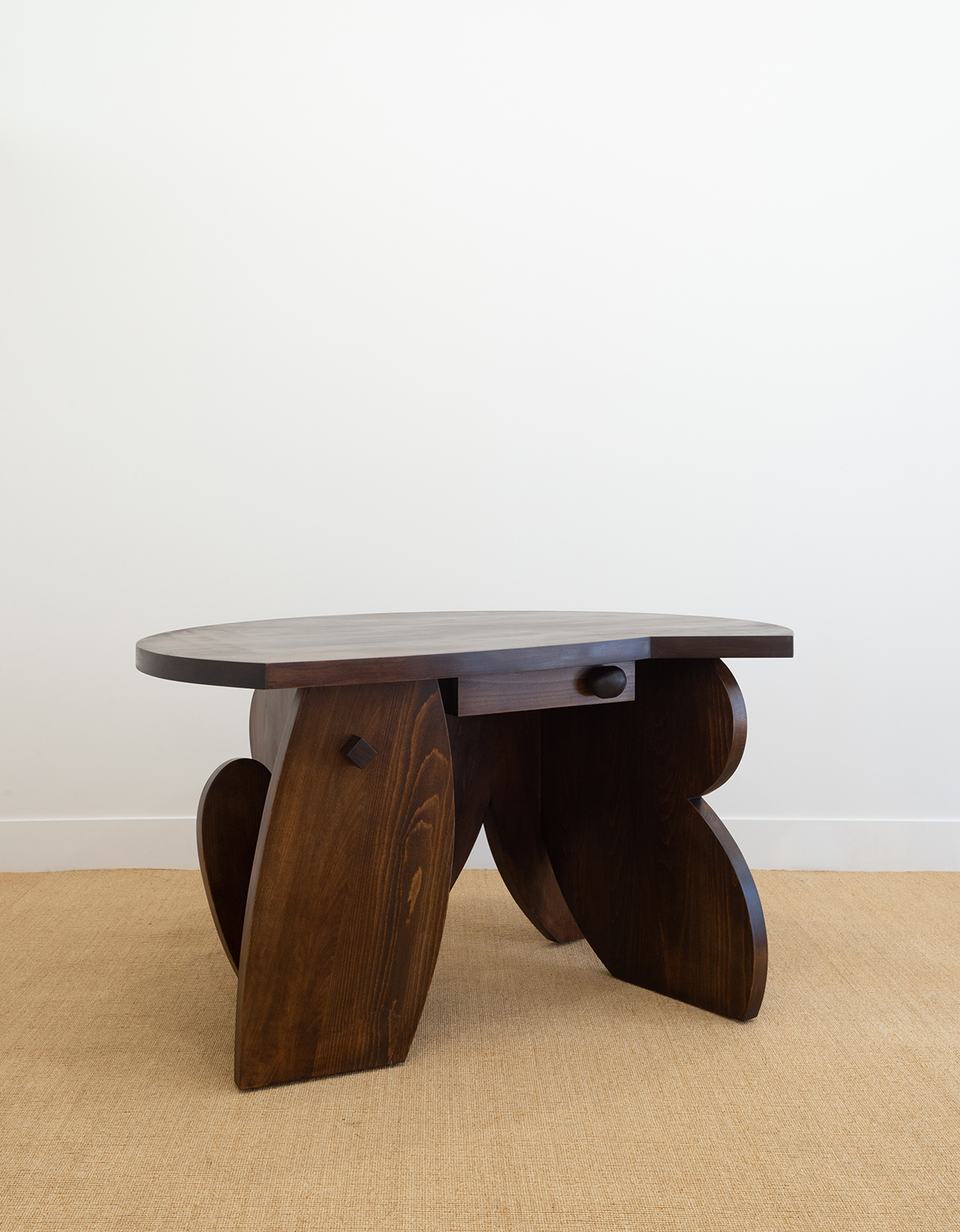
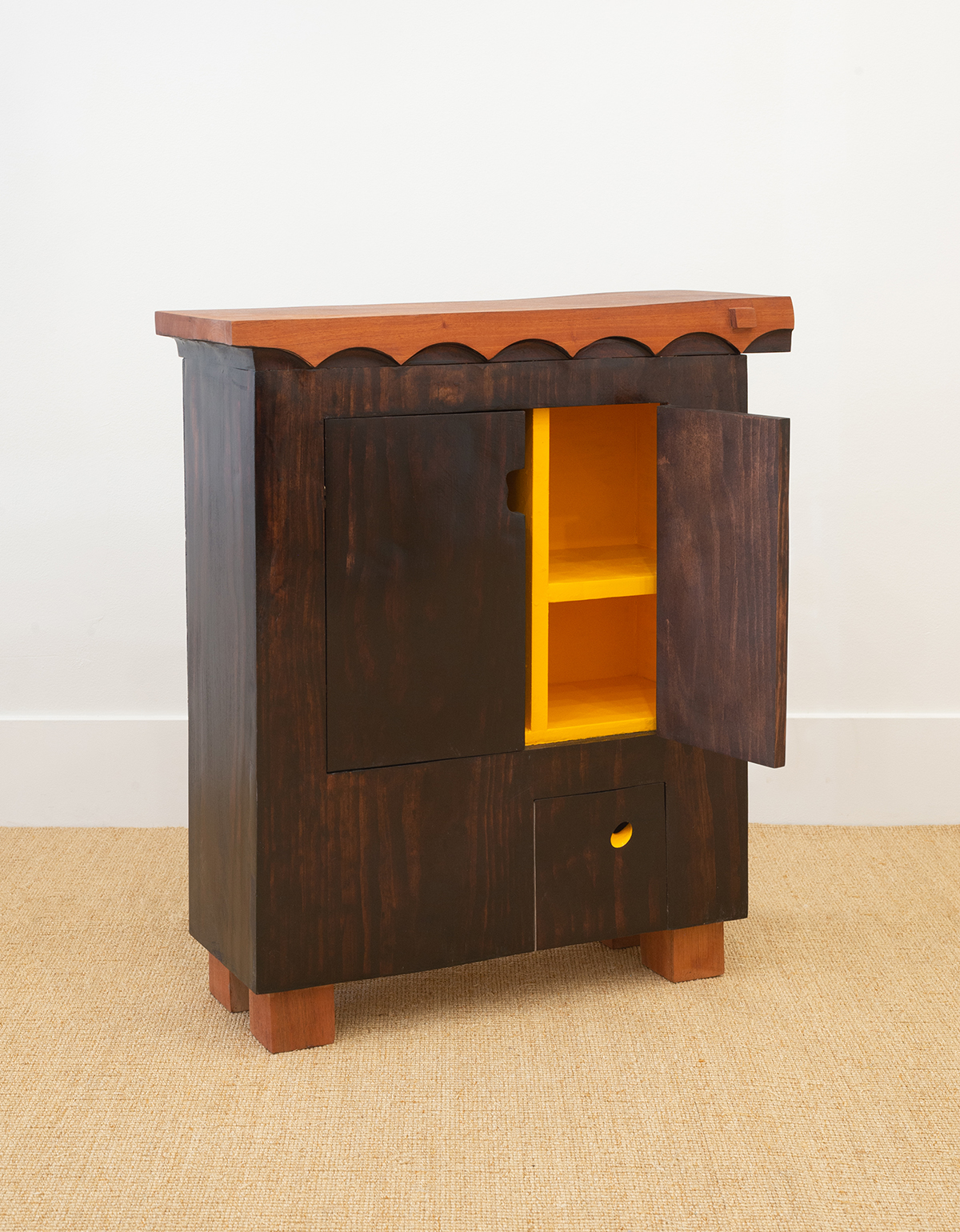
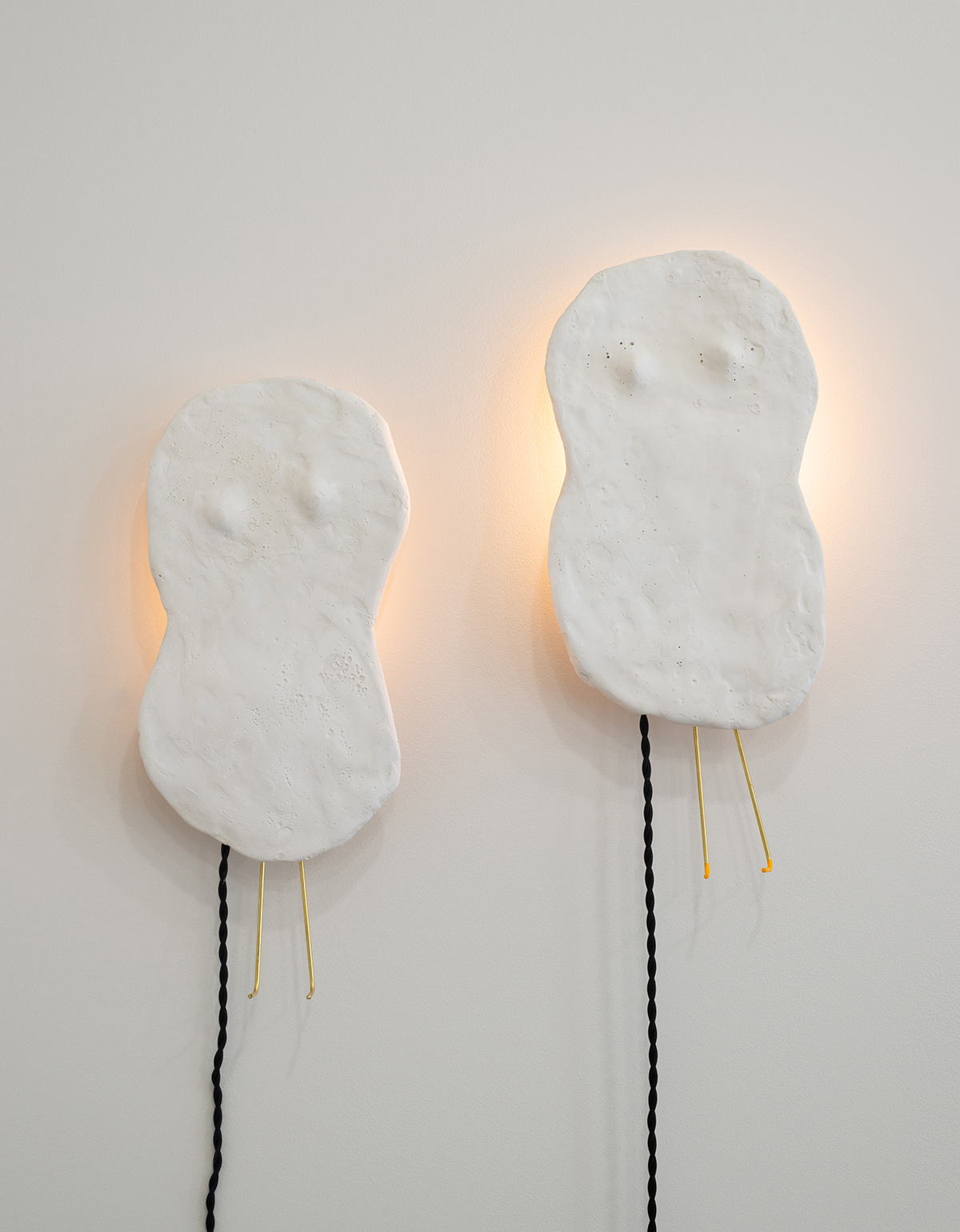
Let’s talk about some of the lighting in the show. I really love the plaster sconce.
Those evolved out of small explorations that I’ve done before. Sometimes I would just make things for myself or for friends but the show gave me the opportunity to formalize some of those ideas. I had originally made it really quickly for a friend, it was something that I always wanted to revisit.
As for my process, I first made a bunch of sketches, but the idea of it was pretty clear. It’s this little figure; it’s maybe a torso, maybe it’s a face. There’s a lot of anthropomorphic aspects to this work, especially in this show. For example, the Freud chair, which resembles a silhouette of a person. That’s something I’m just drawn to when I’m trying to define the characteristics of a piece. So in that sense, the form came pretty naturally and very quickly.
What are you planning for the future?
After the show, I’m just focussing on how I can keep my solo practice going, just in a technical sense. I’m trying to have a show in New York hopefully next year. My mom’s a painter, she has a piece in the show. It’s the blue painting that’s hanging behind in the images. Her work was always around when I was growing up. I asked her to send me some pieces last year when I started to get a little bit of interest from the press, just so that I could have them for shoots as part of the scenery. So now we’re thinking about maybe doing a show together next year. Two generations of artists looking at how her painting has influenced my objects or vice versa. I think it would be kind of interesting.
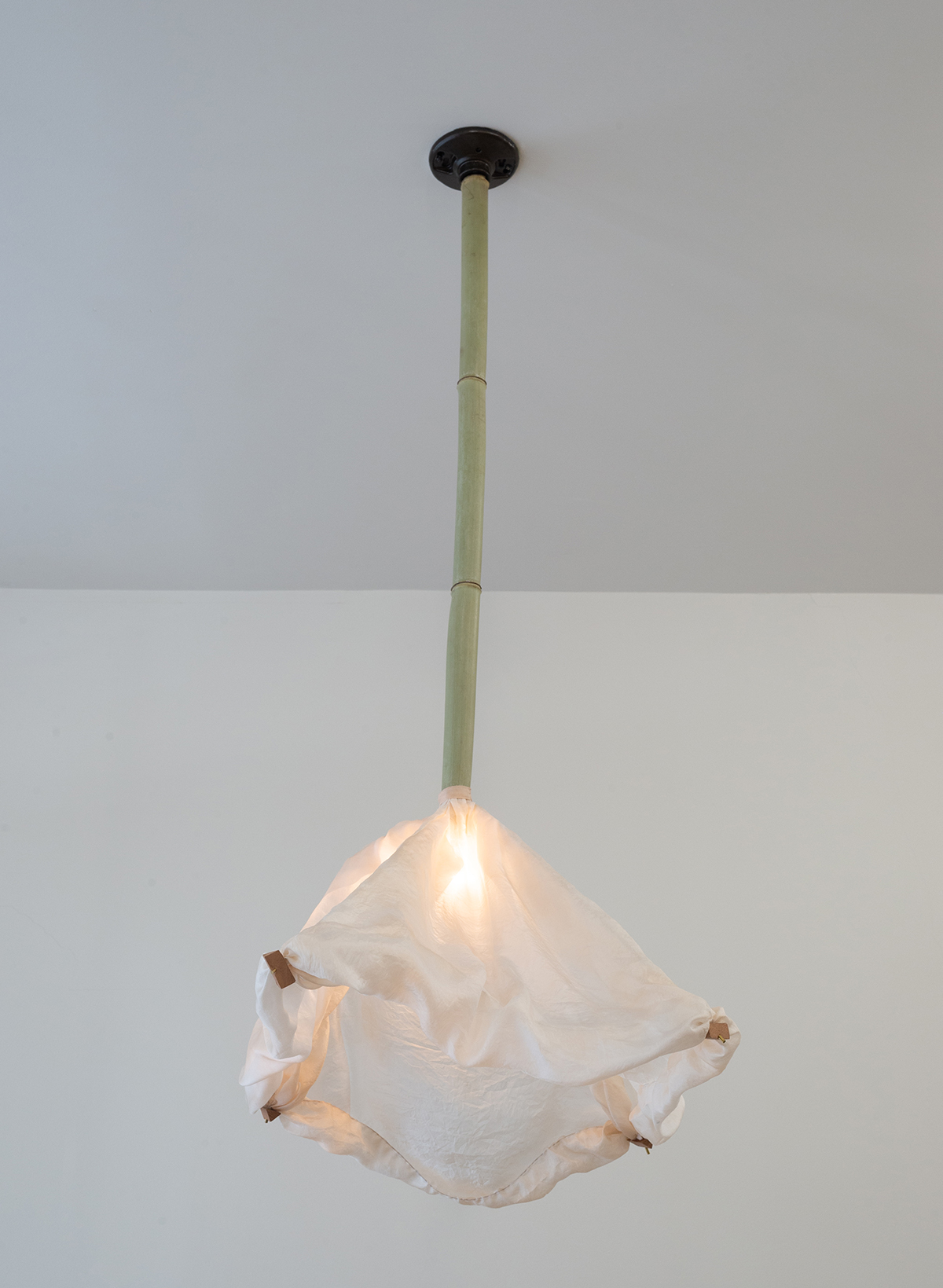
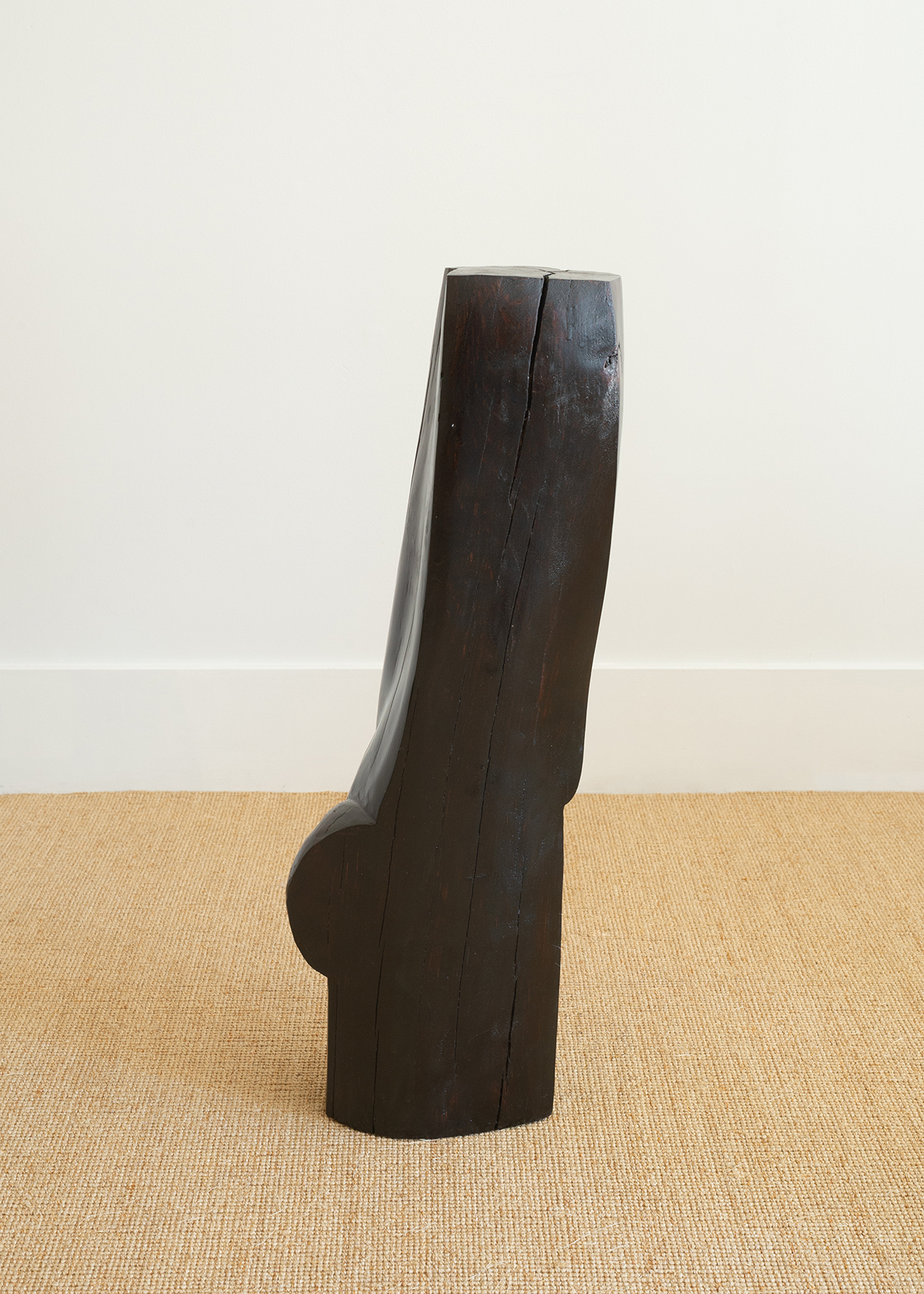
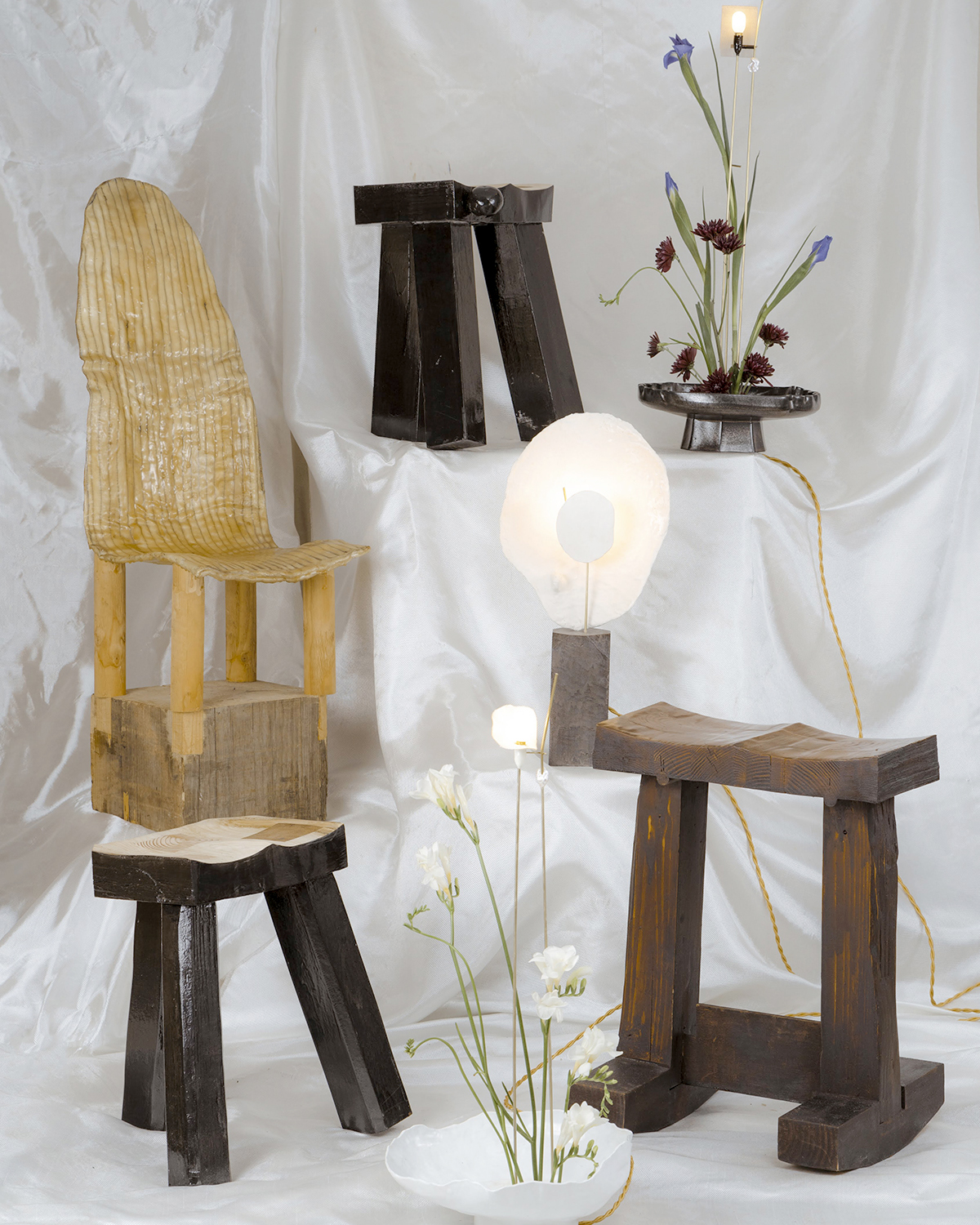
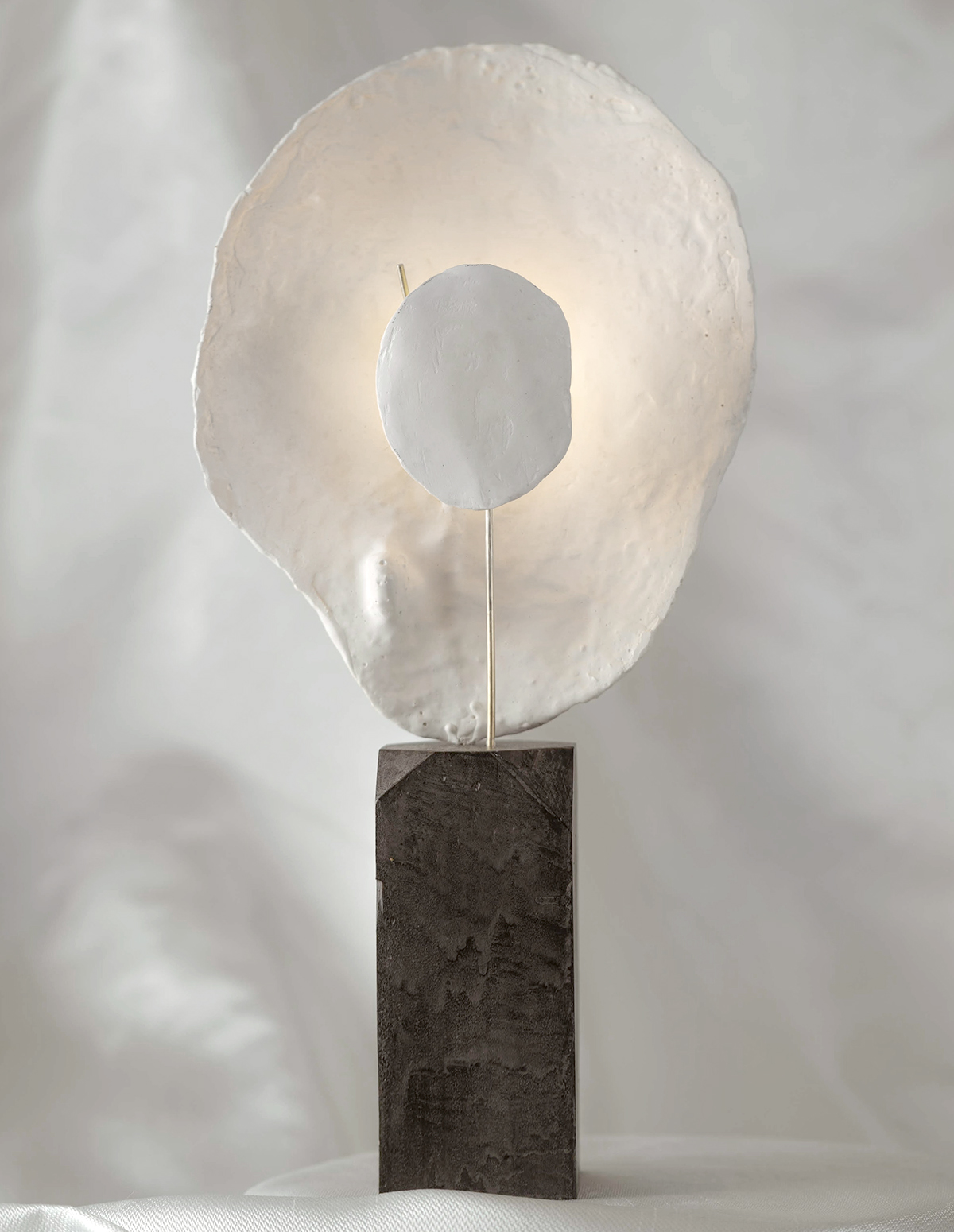
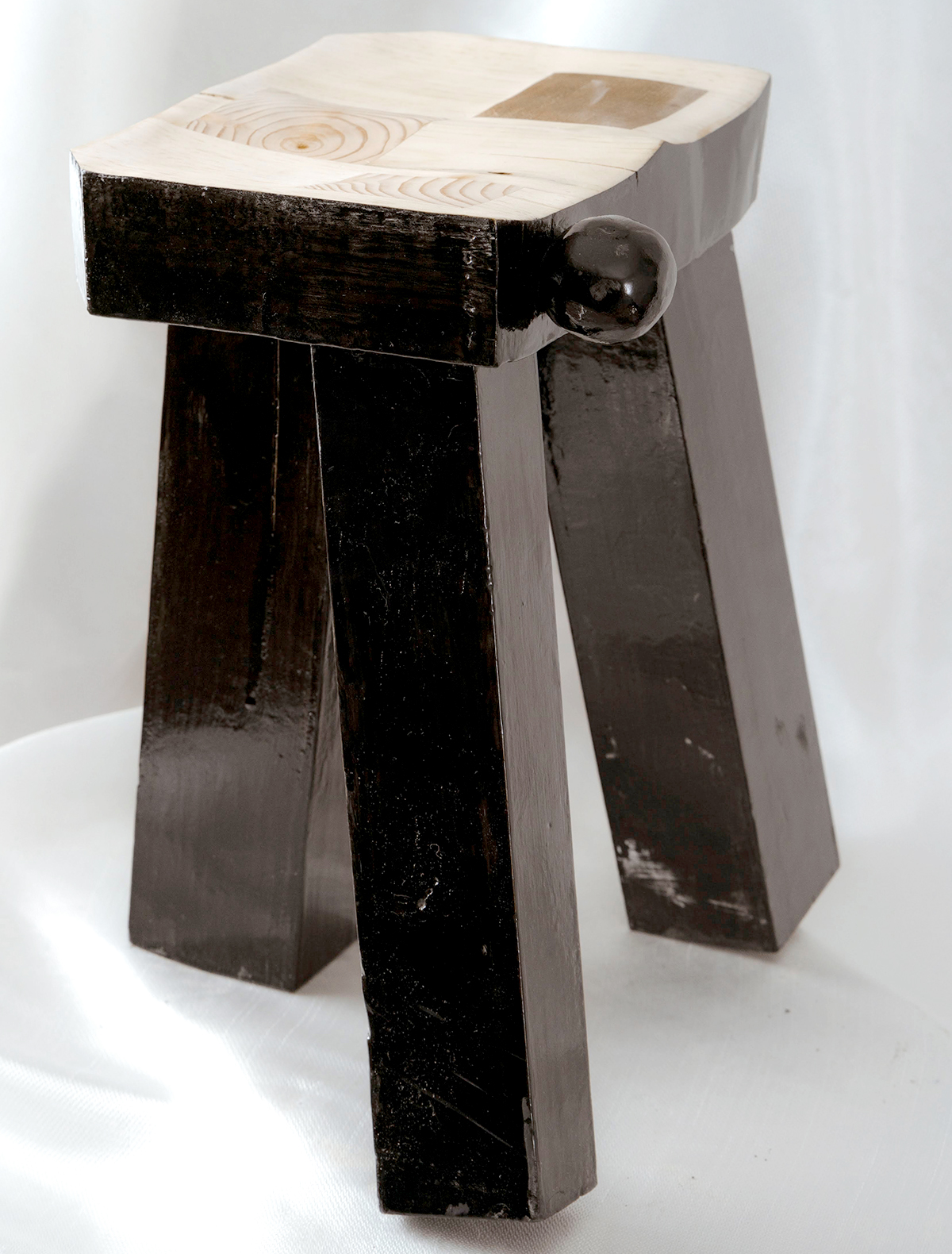
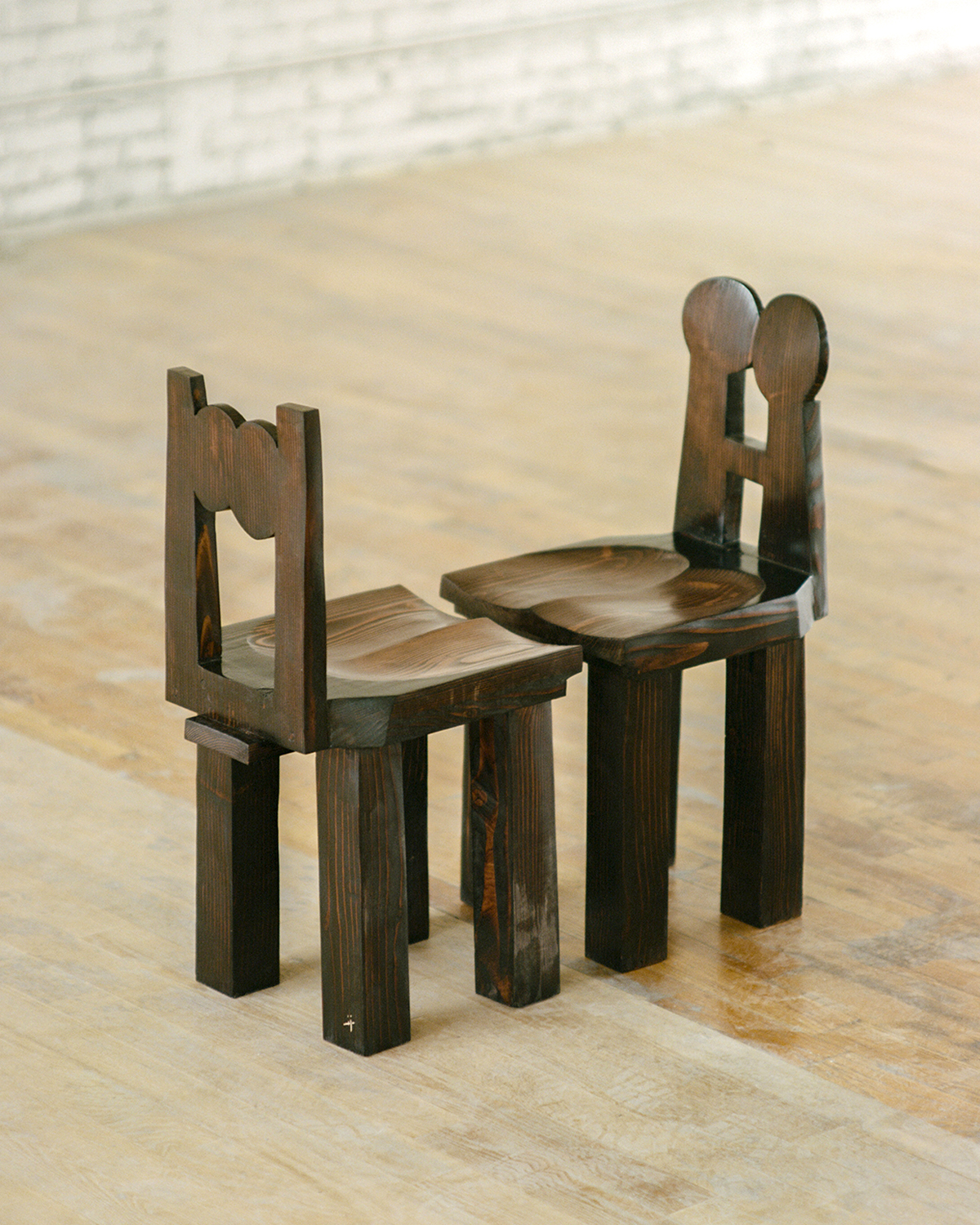
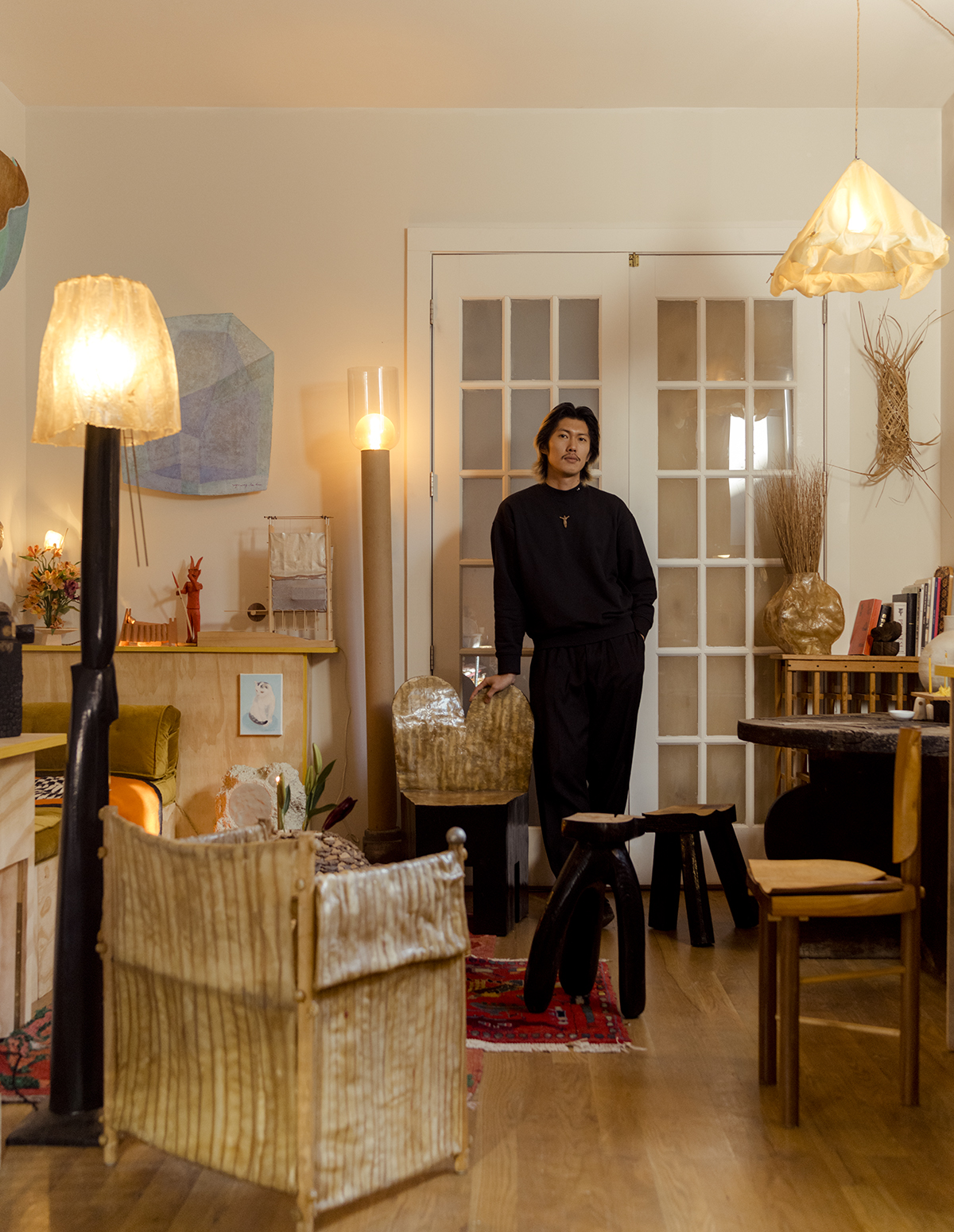
Portrait by Clement Pascal, previous four photos by Sean Davidson
